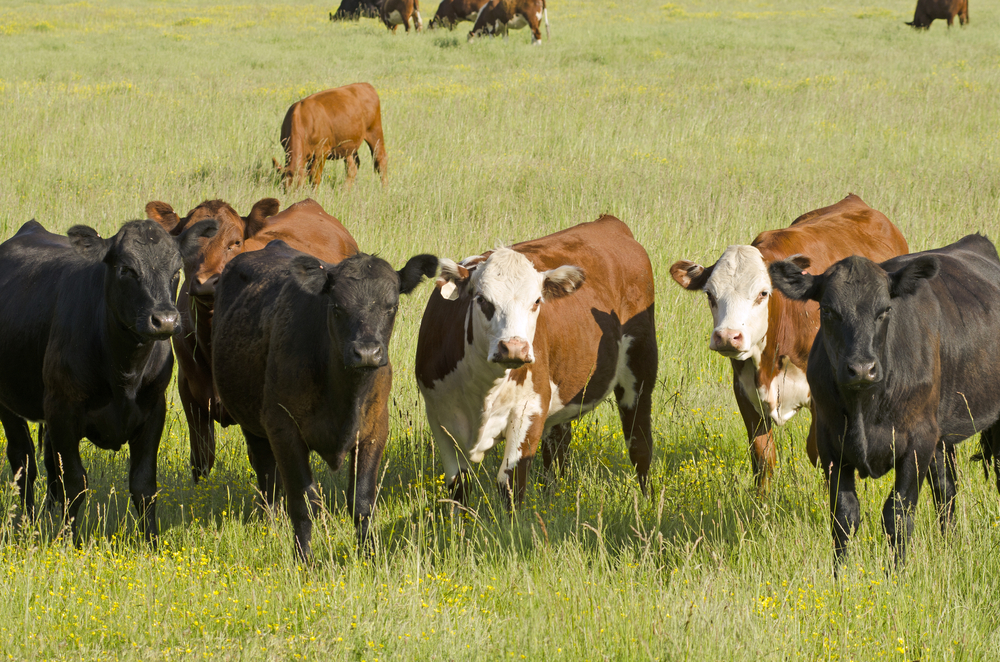Beef

Nutrient Composition of By-Product Feeds
The nutrient composition of by-products varies widely. The following table is a general guideline for understanding feed composition, but a feed analysis should be requested to more accurately determine feed value for your situation.
Table 1. Nutrient Composition of Byproduct Feeds
†Adapted from NRC (1996) and Preston (2014) Feed Composition Tables
‡DM, dry matter; TDN, total digestible nutrients; CP, crude protein; Ca, calcium; P, phosphorous.
| FeedType† | DM,‡ % | TDN,% | CP,% | Ca,% | P,% |
|---|---|---|---|---|---|
| Citrus Pulp | 90 | 82 | 7 | 1.7 | 0.2 |
| Cottonseed Meal | 90 | 78 | 45 | 0.20 | 1.00 |
| Cottonseed Hulls | 90 | 42 | 4 | 0.15 | 0.10 |
| Corn Gluten Feed (CGF) | 90 | 83 | 24 | 0.08 | 0.55 |
| Dried Distiller’s Grains (DDGS) | 90 | 95 | 28 | 0.05 | 0.88 |
| Gin Trash | 85 | 45 | 8 | 0.90 | 0.20 |
| Hominy | 90 | 90 | 11 | 0.03 | 0.48 |
| Peanut Hulls | 90 | 25 | 8 | 1.20 | 0.10 |
| Peanut Skins | 90 | 65 | 17 | 0.19 | 0.20 |
| Rice Bran | 90 | 71 | 14 | 0.07 | 1.70 |
| Soybean Hulls | 90 | 78 | 12 | 0.55 | 0.20 |
| Wheat Middlings | 90 | 83 | 18 | 0.16 | 1.10 |
| Whole Cottonseed | 90 | 93 | 23 | 0.60 | 1.10 |
| 50:50 CGF : Soyhulls | 90 | 80 | 18 | 0.34 | 0.36 |
| 50:50 DDGS : Soyhulls | 90 | 81 | 19 | 0.32 | 0.37 |
Selecting an Energy or Protein Supplement
Evaluate the feed on a cost per pound (lb) of nutrient basis.
2000 lb per ton x % DM x % TDN = lb TDN
$ per ton / lb TDN = $ per lb TDN
2000 lb per ton x % DM x % CP = lb CP
$ per ton / lb CP = $ per lb CP
Example
What is the cost of soybean hulls as an energy supplement?
Given: 90% dry matter, 75% TDN, 12% CP $180 per ton
2000 lb per ton x 0.90 x 0.75 = 1350 lb TDN per ton
$180 per ton / 1350 lb TDN per ton = $0.13 per lb TDN
Bulk Density of Commodities
The following table provides density estimations for storage considerations.
Table 2: Density Estimations for Storage Considerations
†Based on standard, dry storage moisture content
‡Sources: Kammel (1991); Rankins, unpublished data, 2013
| Commodity† | Pounds per Cubic Foot‡ |
|---|---|
| Broiler litter | 42 |
| Citrus pulp, loose | 20 |
| Citrus pulp, pelleted | 45 |
| Corn, shelled | 45 |
| Corn gluten feed | 33 |
| Cottonseed meal | 38 |
| Dried Distiller’s Grains | 18 |
| Hominy | 28 |
| Oats, grain | 26 |
| Peanut hulls, loose | 7 |
| Peanut skins | 11 |
| Rice bran | 20 |
| Soybean hulls, loose | 28 |
| Soybean hulls, pelleted | 40 |
| Wet Distiller’s Grains | 40 |
| Wheat middlings | 30 |
| Whole cottonseed | 25 |
For further information on by-product feeds, consult the publication, By-Product Feeds for Alabama Beef Cattle, ANR-1237.

